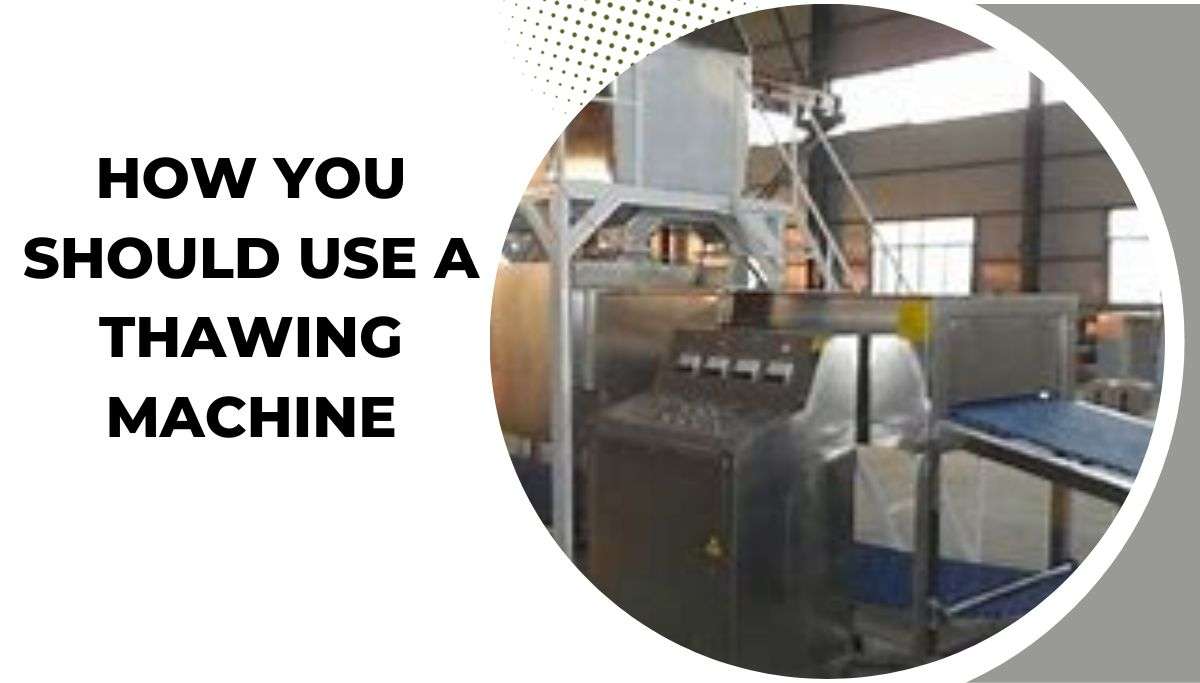
Nov 1,2023
Thawing Machine, Rapid Thaw Machine, Defrosting Machine, Food Thawing Machine, Commercial Thaw Machine - these are terms that often go hand in hand with food preparation in today's fast-paced world.
As we seek ways to optimize our cooking processes and ensure that meals are prepared efficiently and safely, the use of thawing machines has become increasingly popular. In this blog post, we'll explore the ins and outs of thawing machines and provide you with a comprehensive guide on how to use them properly.
Before delving into the specifics of thawing machines, it's essential to understand why proper thawing is so crucial. Thawing is the process of taking frozen foods from a solid, icy state to a more manageable one for cooking.
This seemingly simple step plays a vital role in food safety and quality. When not done correctly, it can lead to numerous issues, including bacterial growth and texture degradation.
Proper thawing ensures that food remains safe to consume and maintains its intended taste and texture. Using the right thawing equipment can significantly aid in achieving these goals.
Thawing machines come in various types, each designed to cater to specific needs and kitchen settings. Here are some of the most common ones:
A rapid thaw machine is designed for fast and efficient thawing. It employs advanced technology to speed up the thawing process while preserving food quality. This type of machine is especially useful in commercial kitchens where time is of the essence.
Defrosting machines are versatile and can handle a wide range of frozen food items. They provide a controlled thawing environment, ensuring that food thaws evenly and safely. These machines are suitable for both home and commercial use.
Food thawing machines are designed with the versatility to thaw various types of foods, from meats to vegetables. They are essential in busy kitchens where a variety of ingredients need to be thawed daily.
As the name suggests, commercial thaw machines are designed for high-capacity operations. These machines are ideal for restaurants, catering services, and food production facilities. They can handle large volumes of frozen goods efficiently.
Now that you're familiar with the different types of thawing machines let's explore how to use them properly. The following step-by-step guide applies to most thawing machines, but it's crucial to follow the manufacturer's instructions specific to your model:
Ensure that the thawing machine is clean and in good working condition. Safety should always be a top priority.
Arrange the frozen food items in a single layer on the thawing rack or tray, making sure they have enough space for proper airflow.
Depending on the type of food and the machine, adjust the temperature and time settings. Follow the recommended guidelines for each food type.
Keep a close eye on the thawing process. Check for any signs of uneven thawing or temperature fluctuations.
Once the food is fully thawed, transfer it to a refrigerator or cook it immediately. Never leave thawed food at room temperature for extended periods.
Different types of food require varying thawing methods. Here are some key considerations for thawing various food items using a thawing machine:
Thaw these items in their original packaging or a sealed, leak-proof bag to prevent cross-contamination. Keep the temperature low to ensure food safety.
Rapid thawing can help preserve the delicate texture of seafood. Ensure the machine settings are suitable for seafood items.
Thawing vegetables often requires lower temperatures and shorter times. Use a food thawing machine with adjustable settings for this purpose.
When thawing bread and pastries, gentle thawing at a controlled temperature is essential to prevent sogginess.
By paying attention to these considerations, you can ensure that your food is thawed in a way that maintains its quality and safety.
Safety is paramount when working with thawing machines. Here are some essential safety precautions to keep in mind:
Ensure the machine is properly grounded and that cords are in good condition. Regularly inspect the electrical components.
Thawing machines should be cleaned and sanitized regularly to prevent contamination. Follow a strict hygiene routine in your kitchen.
Schedule routine maintenance for your thawing machine to keep it in optimal condition. Address any malfunctions promptly to avoid food safety risks.
Using thawing machines offers several advantages, especially in a commercial kitchen setting:
Thawing machines significantly reduce thawing time, allowing for quicker food preparation.
Proper thawing helps preserve the taste and texture of food.
Accurate thawing prevents food from spoiling due to improper thawing methods.
Thawing machines can be integrated into kitchen workflows, streamlining operations.
While thawing machines offer numerous benefits, there are common mistakes that you should avoid:
Never thaw food at room temperature, as it can lead to bacterial growth. Always use a thawing machine or a refrigerator.
Regular maintenance is essential to keep your machine in good working order. Neglecting this can lead to breakdowns and food safety risks.
Overloading the machine with too much food can result in uneven thawing and longer processing times.
In commercial settings, the use of commercial thaw machines is a game-changer. Restaurants, catering services, and food production facilities rely on these machines to maintain efficiency and consistency.
Commercial thaw machines are designed to handle large quantities of frozen items, ensuring that the kitchen operates smoothly and that customers are served quality meals every time.
To ensure the longevity and effectiveness of your thawing machine, consider these best practices:
Regularly clean and sanitize the machine following manufacturer guidelines.
Schedule routine maintenance with a qualified technician.
Keep a record of maintenance and service to track the machine's performance.
Thawing machines have revolutionized the way we prepare food, offering speed, convenience, and safety. By understanding the types of thawing machines, following proper procedures, and practicing safety measures, you can harness the full potential of these machines to enhance your culinary experience. Whether you're a home cook or a professional chef, the right thawing machine can make a world of difference in your kitchen.